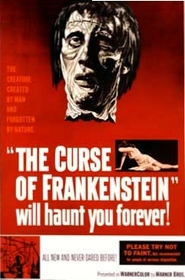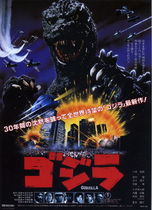Our editor-in-chief Nate Yapp is proud to have contributed to the new book Hidden Horror: A Celebration of 101 Underrated and Overlooked Fright Flicks, edited by Aaron Christensen. Another contributors include Anthony Timpone, B.J. Colangelo, Dave Alexander, Classic-Horror.com's own Robert C. Ring and John W. Bowen. Pick up a copy today from Amazon.com!
The Curse of Frankenstein (1957)
This is the one that began Hammer's revival of Gothic horror. Up until the time this was made, horror in the 50s consisted of giant monsters or atomic fiends. This took horror back to its roots, and threw in color and a heightened sexual awareness at no extra charge. Director Terence Fisher and writer Jimmy Sangster should be commended for the excellent work they do here.
Obviously, this is another retelling of Mary Shelley's famous story, but it's completely different from the earlier Universal version. The Baron (Peter Cushing) isn't merely meddling in what man was not meant to know, he's throwing himself into it headfirst, and reveling in it. He's truly only interested in the science of the Creature (Christopher Lee, doing what he can with a small role), and sees him as just another experiment. His only interest in the creature's functionality is how advantageous it can be in the acceptance of his work by the scientific community. Here the Baron is the focus of the film, not the Creature, and Cushing pulls things off beautifully. It's as if he were made to play Frankenstein. In the halls of horror, there are actors closely matched to characters because of their excellent performances. Well, right next to Karloff as the Monster and Lugosi as Dracula, there should be a space for Cushing, and not Colin Clive, as the good doctor.
The monster is much more complex than he originally appears. Lee had to combine the coordination of a child in an adult's body with a stupid bloodlust which doesn't appear to derive out any rage. The Creature kills because that's all it appears to be equipped to do. It knows no love, no hatred, no sickness. It is not repulsed by its own appearance. In a very strange manner, it is akin to the Pod People from Invasion of the Body Snatchers.
The production itself is as economical as possible. The Baron's castle, while a nicely Gothic set piece, is not very impressive. The laboratory is very realistic, but the very low-key electrical sounds and very small quantities of unnecessary apparatus during the big reanimation scene makes one wish for the whirring equipment of the old days. However, the direction makes up for this, with some nice touches of dark visual humor, and some shocking suggested scares. Bonus points for the neat ending. Pales next to Karloff, but what doesn't? Otherwise, this is one of the finest horror films ever made.








